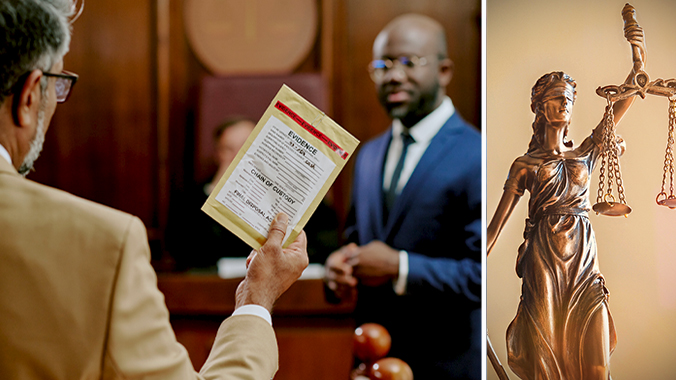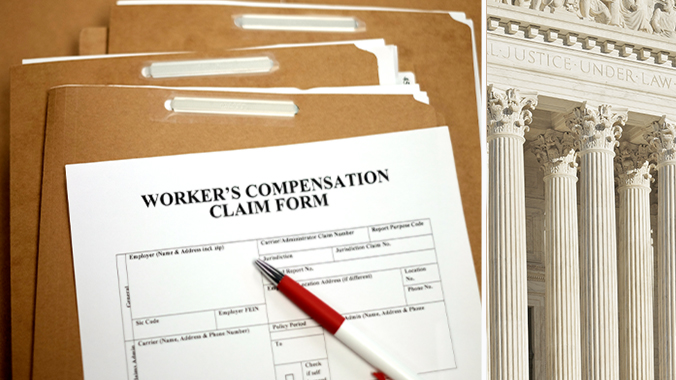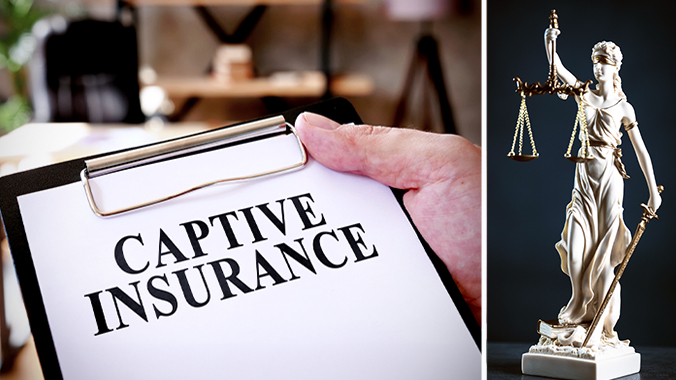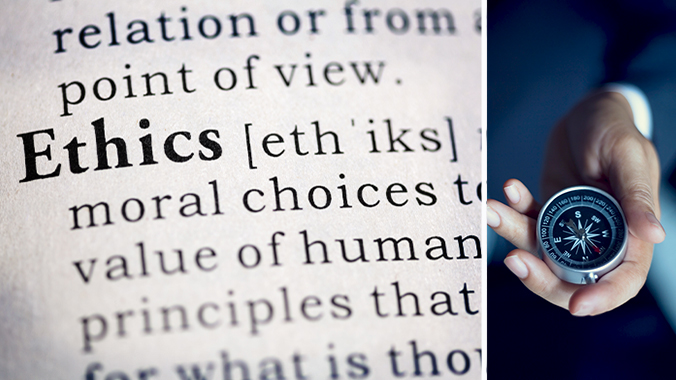Litigating Distracted and Fatigued Driving: Personal Injury, Commercial Transportation, and Insurance Defense Cases



2 hour CLE
Get this course, plus over 1,000+ live webinars.
Learn More
Program Summary
Session I - Distracted and Fatigued Driving: Legal and Safety Implications – Jonathan E. Halperin
Distracted and fatigued driving has emerged as one of the most pressing legal and public safety challenges of our time. Attorneys handling personal injury, commercial transportation, or insurance defense cases are increasingly confronted with the complex interplay of scientific research, statutory frameworks, and litigation strategy in this area. This session will explore how distracted and fatigued driving contributes to crashes, the evolving legal standards for liability, and the critical role of evidence collection in proving causation. Participants will gain insights into how courts are treating negligence per se, third-party liability, and employer responsibility theories. The session will also highlight valuation disputes, particularly where technology and medical evidence intersect, and discuss strategies for both plaintiff and defense attorneys. Ultimately, this session will provide attorneys with the knowledge and tools needed to effectively litigate these cases, counsel clients, and anticipate future developments in this evolving field.
Key topics to be discussed:
- Current statistical landscape and definitions
- Scientific research and cognitive impact
- Legal framework and liability standards
- Evidence collection and litigation strategies
- Case law and emerging precedents
- Litigation strategy and case development
- Prevention and risk management
- Conclusion and key takeaways
Session II - Fatigue and Distracted Driving in the Trucking Industry - Nancy Grugle, Ph.D., CHFP and James E. Lewis, M.Ed., CDS
This session focuses on the problem of fatigue and drowsy driving in the trucking industry and its serious safety and legal consequences. Participants will learn what fatigue is, how it differs from simple lack of sleep, and the many ways it can impair a truck driver’s ability to operate safely. The session will review common causes of fatigue, from long or irregular shifts to early start times, drug or alcohol use, and certain health conditions. It will also explain the federal Hours-of-Service rules that govern truck drivers, including limits on driving hours, required breaks, and key exceptions. In addition, the session will explore how investigators and regulators determine whether fatigue was a factor in a crash, and the responsibilities trucking companies hold in preventing these risks. The session will also address distracted driving, including the various types of distractions—visual, manual, and cognitive—that can compromise driver attention and reaction time, as well as the federal regulations and company policies designed to reduce these incidents. Finally, a case example will show how these issues come together in practice, giving attorneys a clear picture of how fatigue and distraction are evaluated in real-world trucking collisions.
Key topics to be discussed:
- Drowsy driving statistics
- What is fatigue?
- Effects of fatigue
- Causes of fatigue
- Human factors vs. trucking investigations of fatigue
- HOS regulations vs. the science of fatigue
- Federal Motor Carrier Safety Administration
- Hours-of-service regulations
- Adverse driving conditions
- Exceptions
- Trucking company responsibilities
- Human factors investigations of fatigue
- Fatigue vs. distracted driving
- Causes and effects of distracted driving
- Trucking regulations for distracted driving
- Trucking company policies for distracted driving
- Human factors investigations of distracted driving
- Case example
This course is co-sponsored with myLawCLE.
Date / Time: October 30, 2025
- 1:00 pm – 3:10 pm Eastern
- 12:00 pm – 2:10 pm Central
- 11:00 am – 1:10 pm Mountain
- 10:00 am – 12:10 pm Pacific
![]() Closed-captioning available
Closed-captioning available
Speakers
 Jonathan E. Halperin | Halperin Law Center
Jonathan E. Halperin | Halperin Law Center
When you’ve been injured, don’t take chances with your future. The insurance company will not offer you a fair amount of compensation, which is why you’re going to need a skilled, aggressive injury lawyer to fight for you during this time.
Meet Jonathan Halperin, an attorney with a wealth of experience from three decades of trials in both state and federal courts. He was selected as a Virginia Super Lawyer® and has been selected to the list of Top 100 Attorneys in Virginia and Top 50 Attorneys in Richmond by Super Lawyers’®. Jonathan has also been named one of the Best Lawyers in Richmond by Richmond’s Style Weekly and was selected for inclusion in Best Lawyers in America, 2015-2023 Editions from Best Lawyers®. He is also AV Rated by Martindale-Hubbell, the highest rating they bestow on attorneys.
Mr. Halperin has been in practice for over 30 years, and during that time, he has left his mark on the law through ground-breaking legal actions. He has fought for the rights of victims, pursued many cases that challenged government entities and manufacturers of harmful products, and kept true to his focus on personal injury law.
 Nancy Grugle, Ph.D., CHFP | Evidence Solutions
Nancy Grugle, Ph.D., CHFP | Evidence Solutions
Dr. Grugle is a human factors expert who specializes in cases involving human performance and behavior, particularly in motor vehicle collisions. Her areas of specialization include fatigue, sleep deprivation, and drowsy driving, as well as distracted driving, looming, visibility/conspicuity, and driver actions. Dr. Grugle has conducted hundreds of forensic investigations on cases involving these issues as well as cases involving roadway design (expectancy and positive guidance), and driver assistance technologies (forward collision warning, lane departure warning).
Dr. Grugle is a Board-Certified Human Factors Professional (CHFP) with over 20 years of academic, research, industry, and forensic experience in human factors engineering. She was awarded competitive human factors research grants from the National Science Foundation, the Ohio Department of Transportation, and the Cleveland State University Transportation Center and her research has been published in national and international peer-reviewed journals.
Dr. Grugle conducts investigations for both plaintiff and defense counsel and has testified in both state and federal courts.
 James E. Lewis | Evidence Solutions
James E. Lewis | Evidence Solutions
Transportation Safety Expert James Lewis has been an expert witness in the trucking & transportation industry for over two decades. He specializes in FMCSA and DOT compliance and training, towing and recovery operations and policies, general transportation operations, and safety policies and procedures.
James obtained his Class A commercial driver’s license in 1987 and boasts more than two million no-fault accident-free miles for his efforts. He has served as a transportation terminal manager, safety director, truck driver trainer, and owner/operator and founded his own full-service freight brokerage.
James’ expertise extends to the automotive industry, where he has consulted on cases involving lemon law, vehicle financing and leasing, dealership fraud, breach of warranty, diminution in vehicle value, automotive repair and maintenance, dealership service and sales policy, and the appraisal of automobiles, recreational vehicles, medium and heavy-duty trucks, motorcycles and watercraft.
James’ extensive industry experience has seen him qualified as an expert witness in both federal and state courts. He has produced hundreds of written reports and has given expert testimony over 900 times.
Agenda
Session I – Distracted and Fatigued Driving: Legal and Safety Implications | 1:00pm – 2:00pm
- Current statistical landscape and definitions
- Distracted driving – the scope of the problem
- Critical statistics for 2023-2024
- The three categories of distraction
- The texting danger
- Fatigued driving – the silent killer
- Key research findings
- Commercial vehicle impact
- Distracted driving – the scope of the problem
- Scientific research and cognitive impact
- Virginia Tech Transportation Institute – the gold standard
- Major study findings
- The emotional factor
- University of Utah – residual cognitive impairment
- Key findings
- Legal implications
- Physiological effects of sleep deprivation
- British research equivalence
- Circadian rhythm impact
- Virginia Tech Transportation Institute – the gold standard
- Legal framework and liability standards
- Federal and state statutory framework
- Federal commercial regulations
- State distracted driving laws
- Drowsy driving laws
- Civil liability framework
- Standard negligence elements
- Negligence per se application
- Advantages of negligence per se
- Evidence requirements
- Vehicle special considerations
- Hours of service violations as negligence per se
- Employer liability theories
- Federal and state statutory framework
- Evidence collection and litigation strategies
- Electronic evidence – the digital trail
- Cell phone records
- Vehicle-based evidence
- Social media evidence
- Proving distracted driving
- Digital forensics strategy
- Witness evidence
- Proving fatigued driving
- Work schedule analysis
- Medical evidence
- Circumstantial evidence patterns
- Electronic evidence – the digital trail
- Case law and emerging precedents
- Third-party liability evolution
- Kubert vs. Best (New Jersey, 2013)
- Expanding third-party theories
- Commercial vehicle precedents
- Hours of service violation cases
- Comparative negligence considerations
- Victim fault analysis
- Third-party liability evolution
- Litigation strategy and case development
- Early case assessment
- Initial client interview
- Preliminary investigation
- Discovery strategy
- Structured discovery plan
- Technology-focused requests
- Settlement considerations
- Valuation factors
- Settlement timing
- Early case assessment
- Prevention and risk management
- Corporate policy development
- Client counseling elements
- Fleet management best practices
- Risk assessment
- Corporate policy development
- Conclusion and key takeaways
Break | 2:00pm – 2:10pm
Session II – Fatigue and Distracted Driving in the Trucking Industry | 2:10pm – 3:10pm
- Drowsy driving statistics
- What is fatigue?
- Fatigue vs. sleep deprivation
- Acute vs. chronic sleep deprivation
- Effects of fatigue
- Falling asleep while driving
- Microsleeps
- Increased reaction time
- Degraded attention and vigilance
- Increased distractibility and confusion
- Decreased motivation
- Increased probability of driving performance errors
- Causes of fatigue
- Time of day
- Irregularly scheduled shifts
- Overnight and extended shifts
- Early wake times
- Drug use
- Methamphetamine
- Marijuana
- Alcohol
- Medical conditions
- Human factors vs. trucking investigations of fatigue
- HOS regulations vs. the science of fatigue
- Federal Motor Carrier Safety Administration
- Hours-of-service regulations
- 49 CFR 395.3
- 49 CFR 395.8
- Property-carrying drivers
- Passenger-carrying drivers
- 30-minute break
- 60/70-hour limit in 7 or 8 days
- Sleeper berth provisions
- Adverse driving conditions
- Exceptions
- Trucking company responsibilities
- Human factors investigations of fatigue
- NTSB fatigue investigation methodology
- Was the driver fatigued at the time of the collision?
- Was fatigue or sleep deprivation the cause of the collision?
- Fatigue vs. distracted driving
- What is distracted driving?
- Types of distractions
- Causes and effects of distracted driving
- Visual distractions
- Manual distractions
- Cognitive distractions
- Perceptual narrowing
- Inattention blindness
- Trucking regulations for distracted driving
- Trucking company policies for distracted driving
- Human factors investigations of distracted driving
- Was the driver engaged in a distracting activity at the time of the collision?
- Was distracted driving a cause of the collision?
- Case example
- Hours of service investigation
- Human factors investigation
More CLE Webinars
Trending CLE Webinars










Upcoming CLE Webinars





























































